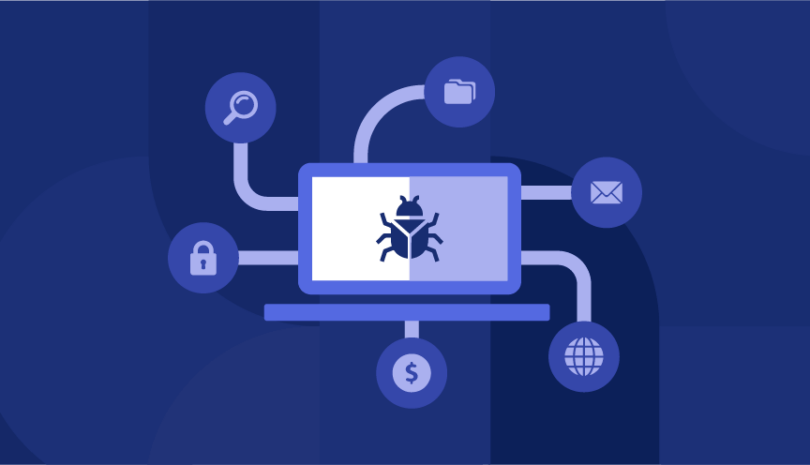From pizza and sushi to hamburgers and tacos, ordering from food delivery platforms has become part of our daily routine. And within this routine, there are occasional nice surprises, like an extra side of fries or even an unexpected dessert. Who can complain, right? But just as there is the occasional good surprise, there are also the ones no one wants. DoorDash discovered this firsthand when it became the recipient of a far less pleasant surprise: a data breach that left customers with an unwelcome experience. The incident began when a social engineering attack compromised an employee account, giving an unauthorized party brief access to internal systems.
The company’s security team discovered the breach on October 25, 2025, and took action quickly to mitigate it. “Our team recently identified and shut down a cybersecurity incident that involved an unauthorized third party gaining access to and taking certain user information.” The data accessed included names, email addresses, phone numbers, and physical addresses. While no Social Security numbers, driver’s licenses, or payment information were compromised, the exposure was still significant. DoorDash reassured users: “Importantly, no sensitive information was accessed by the unauthorized third party, and we have no indication the data has been misused for fraud or identity theft at this time.”
Why Even Limited Data Exposure Matters
Email addresses and phone numbers were accessed, which allows attackers to craft highly convincing, personalized messages, while physical addresses can be exploited for scams or other social engineering schemes. In short, while the severity of the DoorDash breach was limited to relatively limited personal data, it should still be taken seriously, as even the simplest intrusion can create cascading risks.
What made this breach particularly interesting is that it didn’t exploit a technical vulnerability. Instead, it leveraged manipulating human behavior. Social engineering attacks prey on trust, using phishing emails, fraudulent calls, or other pretexts to manipulate employees into giving access. The DoorDash incident is a reminder that people can be the weakest link.
The Proof Is in the Problem
This problem is magnified by an ever-increasingly complex web of third-party relationships that organizations rely on. Contractors, vendors, and partners each introduce their own potential vulnerabilities. Panorays’ 2025 CISO Survey highlights the scale of the problem. The survey shows that 91% of CISOs reported an increase in third-party cybersecurity incidents over the past year, yet only 3% of organizations claim full visibility into their entire supply chain, including fourth- and nth-party relationships. Additionally, 98% of companies admit leaving at least 10% of third-party vulnerabilities unresolved, often due to resource constraints, and 81% say their budgets for managing third-party risk are insufficient. These statistics prove that, as risks expand, most organizations remain underprepared.
It shouldn’t be surprising that technology alone isn’t enough to address this challenge. Even though AI is making social engineering easier for attackers, it is also part of the solution in combating them. Solutions like Panorays offer security teams the ability to leverage AI to their advantage by maintaining real-time visibility into their third-party ecosystems.
If we look back at the survey, it revealed that 27% of CISOs are already using AI for vendor risk assessments, with another 69% planning adoption. For those leveraging AI, the time to complete assessments drops by 44% on average, allowing security teams to focus on proactive risk management instead of manually tracking sprawling third-party relationships.
What Can We Learn From This DoorDash Breach?
There is a clear takeaway for DoorDash and other companies. Security teams need to consider their employees, contractors, or vendors as potential entry points. Access should be audited regularly, unnecessary privileges revoked, and a least-privilege policy strictly enforced. Training also needs to be practical and scenario-based, reflecting the kinds of real-world attacks employees are most likely to face.
Vendor risk management is another area that demands continuous attention. Relying on annual questionnaires or static assessments is no longer sufficient. The DoorDash breach teaches us that it’s critical for organizations to maintain a live view of their third-party ecosystems, monitoring for changes in tools, personnel, or integrations that could affect risk posture. The earlier a potential vulnerability is spotted, the faster a response can be mounted.
The DoorDash breach reinforces the importance of visibility and vigilance, as contact information alone is valuable and opens the door for follow-on attacks. For businesses, this breach should serve as a wake-up call. Showing the reality that third-party cyber risk is growing, real, and too large to ignore. This is exactly where solutions like Panorays become essential – through providing continuous, automated visibility into third-party risk.
DoorDash Breach FAQs
-
The DoorDash breach occurred when a company employee was targeted with a social engineering attack, allowing an unauthorized party temporary access to internal systems. DoorDash detected the breach on October 25, 2025, and contained it quickly.
-
The DoorDash breach exposed customer contact details, including names, email addresses, phone numbers, and physical addresses. Sensitive data such as Social Security numbers, driver’s licenses, passwords, and payment information was not compromised.
-
No. The DoorDash breach happened due to human manipulation rather than a software flaw. It highlights that employees, vendors, and contractors are common attack vectors in social engineering-driven incidents.
-
AI-powered solutions can identify threats faster and provide real-time insight into supply chains. For breaches like the DoorDash breach, AI helps security teams shift from manual processes to proactive, continuous monitoring.
-
To avoid incidents similar to the DoorDash breach, companies should move beyond annual assessments and adopt continuous, automated monitoring of vendors. This helps detect risky changes in tools, personnel, or integrations before they lead to a breach.


